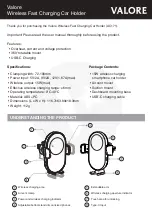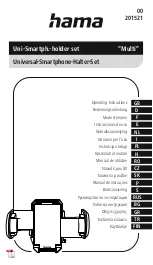
Remote Control Basics
R&S
®
NRPxxA(N)
142
User Manual 1177.6017.02 ─ 05
11.2.4
Overview of Syntax Elements
The following table provides an overview of the syntax elements:
:
The colon separates the mnemonics of a command. In a command line, the separating semico-
lon marks the uppermost command level.
;
The semicolon separates two commands of a command line. It does not alter the path.
,
The comma separates several parameters of a command.
?
The question mark forms a query.
*
The asterisk marks a common command.
'
"
Quotation marks introduce a string and terminate it (both single and double quotation marks are
possible).
#
The hash symbol introduces binary, octal, hexadecimal and block data.
●
Binary: #B10110
●
Octal: #O7612
●
Hex: #HF3A7
●
Block: #21312
A "white space" (ASCII-Code 0 to 9, 11 to 32 decimal, e.g. blank) separates the header from the
parameters.
11.2.5
Structure of a Command Line
A command line can consist of one or several commands. It is terminated by one of the
following:
●
a <New Line>
●
a <New Line> with EOI
●
an EOI together with the last data byte
Several commands in a command line must be separated by a semicolon ";". If the
next command belongs to a different command system, the semicolon is followed by a
colon.
If the successive commands belong to the same system, having one or several levels
in common, the command line can be abbreviated. To this end, the second command
after the semicolon starts with the level that lies below the common levels. The colon
following the semicolon must be omitted in this case.
Example:
TRIG:LEV 0.1mW;TRIG:DEL 3E-3
This command line contains two commands. Both commands are part of the
TRIG
command system, i.e. they have one level in common.
When abbreviating the command line, the second command begins with the level
below
TRIG
. The colon after the semicolon is omitted. The abbreviated form of the
command line reads as follows:
TRIG:LEV 0.1E-3;DEL 3E-3
SCPI Command Structure
















































